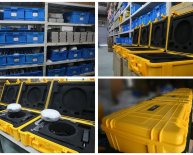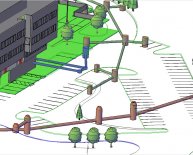
Civil Engineering Supplies
Water resource engineers concern themselves with the collection and management of the water supply available for use by mankind. Only a small percentage of the earth’s water is usable by man, as the largest percentage of the earth’s water supply is salt water.
With the rising population level, the demands for this finite supply are constantly increasing, creating a requirement for increased efficiency in our use of this natural resource.
To fully understand the available water resources, water resource engineers must study a number of different disciplines, including hydrology, meteorology, geology, environmental science, conservation and resource management.
Each of these different disciplines provides a piece of the puzzle in understanding the water resources available and how best to manage them.
A large part of water resource engineering consists of predicting the available water supply, both as surface water and in underground aquifers. Modeling of weather patterns and how they affect the available water supply helps water resource engineers predict future water supplies and how they will meet the needs of industry, agriculture and personal consumption.
Managing Water Supplies
The management of water supplies consists of gathering, storing and transporting water from where it is located to where it needs to be consumed. Gathering and storing is most often accomplished by building of dams, creating reservoirs. This requires a detailed understanding of available surface water, the geology of the watershed and the geology of the proposed reservoir site.
While the design of the dam itself will be created by structural engineers, the best location for it is determined by water resource engineers. They study watersheds, precipitation patterns and river flow rates to determine the most effective location for the creation of a reservoir, taking into account the existing geology and terrain.
Computer modeling, coupled with terrain mapping helps water resource engineers determine the effect of dams that are constructed, predicting the capacity of the reservoir, its extent, capacity and the amount of time it will take to fill.
Working With Other Civil Engineering Specialties
The actual design of the dam and reservoir will usually be undertaken by other civil engineering specialties, working in close conjunction with water resource engineers. Specifically, water resource engineers work hand-in-hand with structural engineers, providing the information needed for the construction of dams and reservoirs.
This is the only civil engineering field which does very little design work. Instead, it is mostly involved with researching and understanding existing resources, in order to project needs and how the resources will meet those needs. The information developed by water resource engineers is usually provided to municipalities and state and federal authorities for the planning of resources to meet future generations’ needs.
Making Water Usable
Simply collecting water in a reservoir isn’t enough. That water then needs to be transported to the place where it will be used, often many miles away. Planning of watercourses, pipelines and treatment facilities to distribute water to the many users is urban and rural areas.
Another aspect of water distribution is in pumping water from underground aquifers for use in municipal water systems. Although this water is often cleaner than surface water, it often needs treatment to remove excess minerals and ensure that it is safe for human consumption.
Flood Damage Prevention
Another totally different aspect of water resource engineering is protection of municipalities from damage caused by flooding. While coastal flooding is the realm of coastal engineers, flooding throughout the rest of the country is the realm of water resource engineers.
Many regions which don’t seem to be likely candidates for flooding can experience flash floods, caused by excessive rainfall many miles from that location. In the mountains, heavy rainfall accumulates rapidly, funneling down canyons which are normally dry.

















